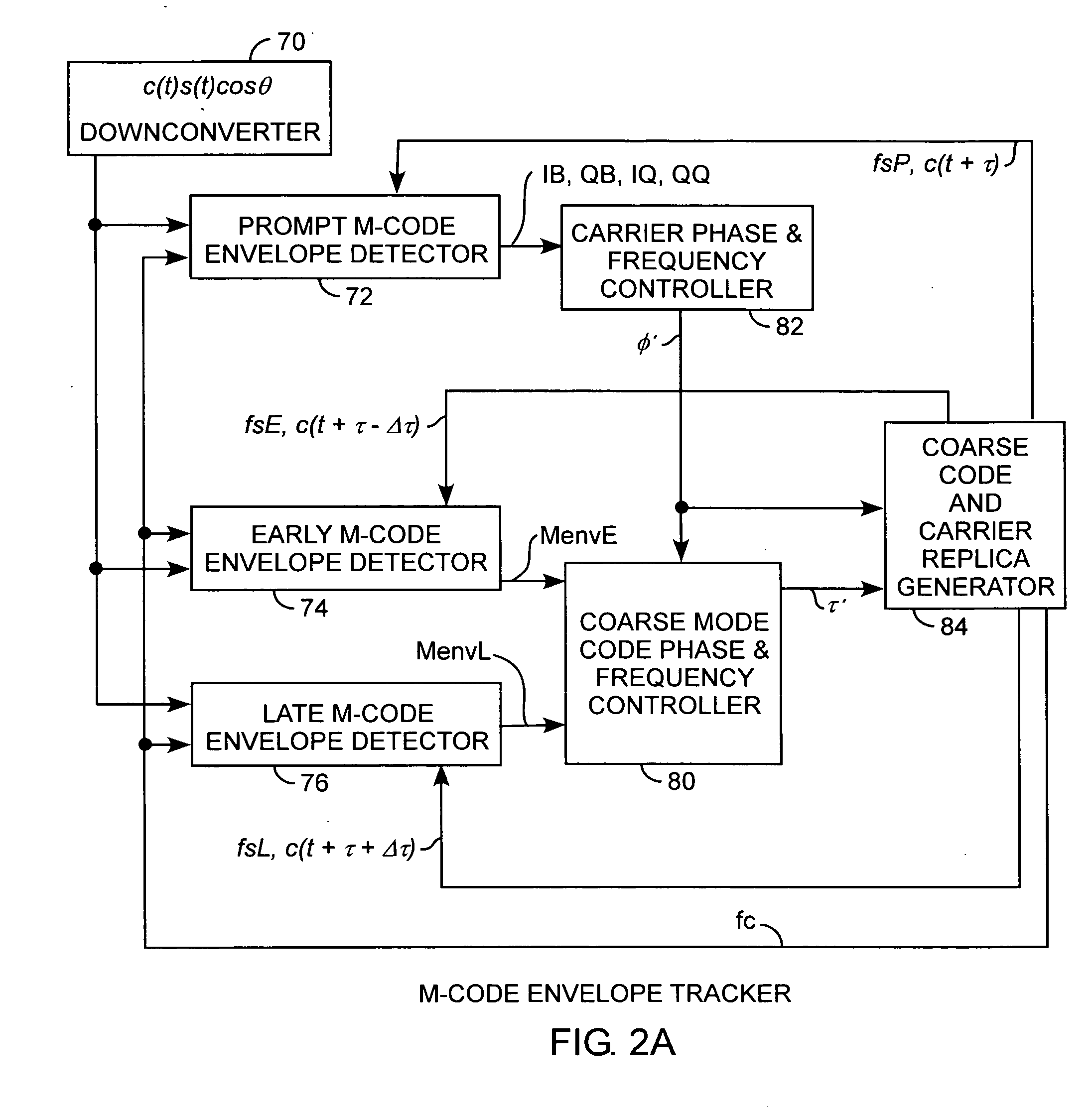Binary offset carrier M-code envelope detector
a detector and binary offset carrier technology, applied in the field of spread spectrum communication systems, can solve problems such as ambiguity problems, difficult demodulation and tracking, and errors in boc code phase tracking
- Summary
- Abstract
- Description
- Claims
- Application Information
AI Technical Summary
Benefits of technology
Problems solved by technology
Method used
Image
Examples
Embodiment Construction
[0032] An embodiment of the invention is described with reference to the figures using reference designations as shown in the figures. Referring to FIG. 1, a c(t)s(t)cos θ IF signal 10 is received and despread by a prompt c(t+τ) PRN code signal 12 by multiplication using mixer 14 for producing a despread received signal. The despread received signal is then fed into two branches including a BOC branch and a QBOC branch. The despread signal on the BOC branch is multiplied by a prompt square wave clock fsP signal 22 by mixer 16 producing a BOC signal. The fsP signal 22 is phase shifted by a ninety-degree phase shifter 20 that can be, for example, a shift register for providing a phase shifted fsP signal communicated to a mixer 18. The despread signal in the QBOC branch is multiplied by the phase shifted signal from the phase shifter 20 by mixer 18 for producing a QBOC signal. The BOC signal is then demodulated in quadrature by the carrier signal fc using mixer 24 and mixer 28 using a ...
PUM
 Login to View More
Login to View More Abstract
Description
Claims
Application Information
 Login to View More
Login to View More - R&D
- Intellectual Property
- Life Sciences
- Materials
- Tech Scout
- Unparalleled Data Quality
- Higher Quality Content
- 60% Fewer Hallucinations
Browse by: Latest US Patents, China's latest patents, Technical Efficacy Thesaurus, Application Domain, Technology Topic, Popular Technical Reports.
© 2025 PatSnap. All rights reserved.Legal|Privacy policy|Modern Slavery Act Transparency Statement|Sitemap|About US| Contact US: help@patsnap.com



